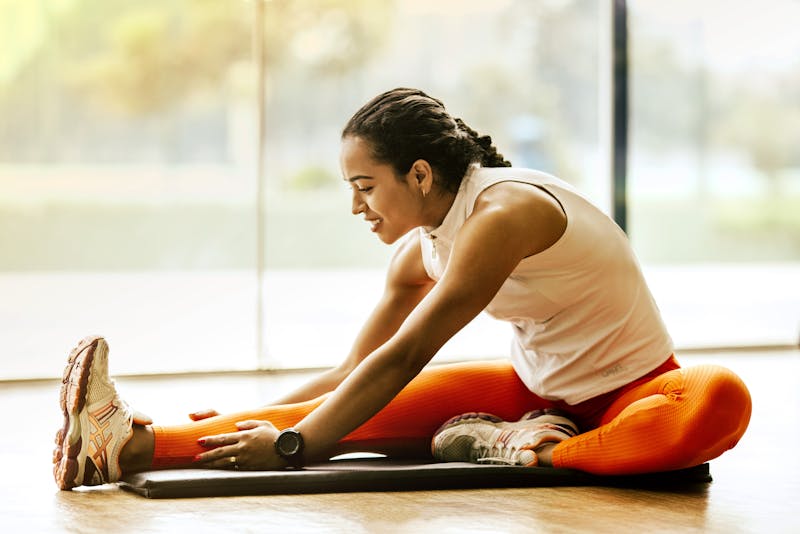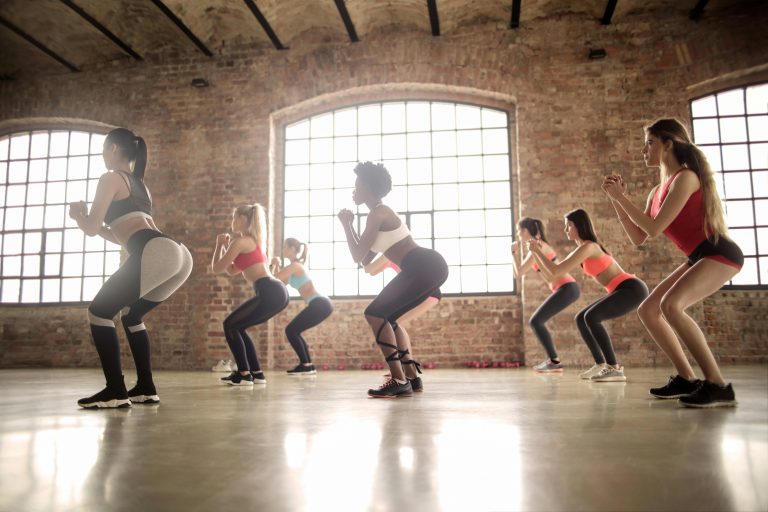
- Strong glutes improve posture, balance, and lower-body strength while enhancing overall aesthetics.
- Beginner-friendly glute workouts can be done at home with minimal equipment, using exercises like glute bridges, squats, and donkey kicks.
- Proper form and mind-muscle connection are crucial to maximize glute activation and prevent injury.
- Consistency and gradual progression in reps, sets, or resistance lead to noticeable results over time.
- Incorporating a variety of exercises ensures all glute muscles (maximus, medius, and minimus) are effectively targeted.
- Tracking progress through photos, measurements, and strength improvements helps maintain motivation.
- Recovery and rest days are essential for muscle growth and preventing overtraining.
Having strong, toned glutes isn’t just about aesthetics. Well-developed glute muscles improve posture, reduce the risk of injury, enhance athletic performance, and provide functional strength for everyday activities. For women, targeting the glutes can be empowering, helping boost confidence while shaping the lower body. The good news is that you don’t need a gym membership or expensive equipment to start building and strengthening your glutes. With beginner-friendly exercises that you can do at home, you can achieve noticeable results with consistency and proper form.
In this article, we’ll guide you through effective glute workouts for women that are perfect for beginners, explain proper techniques, and provide tips for maximizing results at home.
Why Glute Strength Matters for Women
Glute muscles, including the gluteus maximus, medius, and minimus, play a vital role in stabilizing the hips, supporting the lower back, and powering movements such as walking, running, and lifting. Many women underestimate the importance of glute training, focusing more on cardio or general leg exercises. However, neglecting the glutes can lead to poor posture, knee pain, and decreased athletic performance.
Strengthening the glutes improves:
- Posture and balance: Strong glutes help maintain proper alignment of the pelvis and spine.
- Lower body strength: They support squats, lunges, and other leg movements, making daily activities easier.
- Fat loss and muscle tone: Developing glutes enhances muscle definition and can aid in burning calories efficiently.
Building a strong foundation is crucial, especially for beginners, as it ensures that you can safely progress to more advanced workouts over time.
How to Start Glute Workouts at Home
Starting a glute-focused workout routine at home doesn’t require heavy weights or complex equipment. What matters most is activating the right muscles and performing movements with proper form. Beginners should focus on low-impact exercises, gradually increasing intensity and resistance.
Key tips for starting glute workouts at home:
- Warm-up first: Activate your glutes with dynamic stretches or light cardio to prevent injuries.
- Use bodyweight exercises: Begin with movements like glute bridges and squats to master form.
- Focus on mind-muscle connection: Concentrate on squeezing the glutes during each repetition.
- Progress gradually: Increase reps, sets, or resistance as your strength improves.
Consistency is more important than intensity when starting. Even 15–20 minutes a day can yield noticeable changes in muscle tone and strength.
Beginner-Friendly Glute Workouts for Women
Below are beginner-friendly glute workouts designed specifically for women. These exercises target all parts of the glutes and can be done at home with minimal equipment. Aim to perform these routines 3–4 times per week.
1. Glute Bridge
The glute bridge is a foundational exercise that targets the gluteus maximus while also engaging the hamstrings and core. It’s ideal for beginners because it requires no equipment and is easy to perform correctly. Perform 3 sets of 12–15 reps daily.
Tips: Avoid arching your lower back. Focus on lifting with your glutes, not your lower back.
2. Squats

Squats are a classic glute exercise that also strengthens the quads and hamstrings. Proper form is crucial to maximize glute engagement and avoid knee strain. Perform 3 sets of 10–12 reps daily.
Tips: Keep your knees in line with your toes and avoid letting them cave inward.
3. Donkey Kicks
Donkey kicks isolate the glute muscles and improve hip mobility. They are particularly effective for lifting and toning the glutes. Perform 3 sets of 12–15 reps per leg.
Tips: Avoid arching your lower back. Focus on controlled movements for maximum activation.
4. Fire Hydrants
Fire hydrants target the gluteus medius, which helps improve hip stability and roundness in the upper glute area. Perform 3 sets of 12–15 reps per side.
Tips: Keep your core tight to prevent swaying in the torso.
5. Step-Ups
Step-ups are functional exercises that strengthen the glutes while improving balance and coordination. You can use a sturdy chair, bench, or step. Perform 3 sets of 10–12 reps per leg.
Tips: Avoid pushing off with the back leg; focus on using the glute of the leading leg.
6. Side-Lying Leg Raises
Side-lying leg raises are excellent for targeting the gluteus medius and improving hip stability. Perform 3 sets of 12–15 reps per side.
Tips: Avoid rocking your torso; isolate the glute for maximum effectiveness.
7. Bulgarian Split Squats
This single-leg exercise challenges balance while providing deep glute activation. Beginners can use bodyweight only before progressing to added weights. Perform 3 sets of 8–10 reps per leg.
Tips: Keep your torso upright and core engaged.
Essential Tips for Beginner Glute Workouts
To maximize results from your glute workouts, follow these essential tips:
- Prioritize form over reps: Correct form ensures proper glute activation and reduces injury risk.
- Include a variety of exercises: Target all glute muscles (maximus, medius, minimus) with different movements.
- Use resistance bands: Bands increase tension and improve muscle engagement, especially for glute bridges and side-lying raises.
- Rest and recover: Allow at least 48 hours between intense glute workouts to prevent overtraining.
- Stay consistent: Progress comes with regular, sustained effort over weeks and months.
How to Track Your Progress
Tracking progress helps you stay motivated and see tangible results. For beginners, measuring progress doesn’t always mean the scale—it’s about strength, endurance, and visual changes.
Ways to track your progress:
- Take photos: Monthly photos help you visually see muscle definition improvements.
- Note strength gains: Track reps, sets, and weights used in each exercise.
- Measure hips and glutes: Periodic measurements reveal growth and toning.
- Assess endurance: Longer sets or increased reps show improvements in muscular stamina.
Common Mistakes to Avoid in Glute Workouts
Even beginners can make mistakes that limit glute engagement or lead to injuries. Avoid these common pitfalls:
- Overusing the lower back: Ensure you lift with the glutes, not the back.
- Neglecting glute activation: Warm up and activate glutes before workouts.
- Skipping progressive overload: Gradually increase resistance or repetitions for results.
- Ignoring recovery: Rest days are crucial for muscle repair and growth.
- Improper form: Perform exercises slowly and with control rather than rushing reps.
Nutrition Tips to Support Glute Growth
Building and toning your glutes isn’t just about exercise; proper nutrition plays a key role in muscle development and overall body composition. To support glute growth, focus on a balanced diet that provides enough protein, healthy fats, and complex carbohydrates. Protein is especially important as it supplies the building blocks needed for muscle repair and growth. Foods like lean meats, fish, eggs, dairy, beans, and legumes are excellent sources.
Carbohydrates provide energy for your workouts, while healthy fats support hormone regulation, which is vital for muscle development. Hydration is equally important—dehydrated muscles can fatigue faster, limiting your performance. Consider:
- Eating a protein-rich meal within 1–2 hours post-workout.
- Including whole grains and vegetables to sustain energy levels.
- Avoiding excessive processed foods and sugars that can hinder muscle tone.
By combining consistent glute workouts with smart nutrition, you can maximize results and see noticeable improvements in strength and shape.
Stretching and Recovery for Glute Workouts

Stretching and recovery are often overlooked but are critical components of an effective glute training routine. Proper recovery helps prevent injuries, reduces muscle soreness, and allows the glute muscles to repair and grow. After each workout, spend 5–10 minutes performing static stretches for the glutes, hamstrings, hip flexors, and lower back. Examples include seated figure-four stretches, standing hamstring stretches, and pigeon pose variations.
In addition to stretching, consider these recovery strategies:
- Foam rolling: Helps release tension and improve blood flow to glute muscles.
- Adequate sleep: Muscle repair and growth primarily occur during rest.
- Active recovery: Light activities like walking or yoga on rest days keep muscles engaged without overtraining.
- Consistency: Regular stretching and recovery routines support long-term progress.
Incorporating stretching and recovery into your glute training plan ensures your muscles remain healthy, flexible, and ready for consistent progress.
Frequently Asked Questions About Glute Workouts for Women
Q: How long will it take to see results?
A: Beginners may notice improvements in strength and tone within 4–6 weeks with consistent workouts, proper form, and adequate nutrition.
Q: Can I build glutes without weights?
A: Yes! Bodyweight exercises like glute bridges, squats, and donkey kicks effectively target the glutes. Resistance bands can further enhance results.
Q: How often should I train my glutes?
A: Aim for 2–4 sessions per week, allowing at least 48 hours of recovery between intense glute-focused workouts.
Q: Do glute workouts reduce fat in the butt area?
A: Targeted exercises build and tone glute muscles, but spot fat reduction isn’t possible. Combining glute workouts with overall cardio and a healthy diet helps reduce body fat.
Sample 20-Minute Beginner Glute Workout at Home
Here’s a simple routine to get started, requiring only bodyweight or a resistance band:
- Glute Bridges – 3 sets, 15 times
- Squats – 3 sets, 12 times
- Donkey Kicks – 3 sets, 12 times per leg
- Fire Hydrants – 3 sets, 12 times per leg
- Side-Lying Leg Raises – 3 sets, 12 times per leg
Tip: Rest for 30–45 seconds between exercises. Repeat 2–3 times for a complete session.
Conclusion
Beginner-friendly glute workouts for women are accessible, effective, and essential for building strength, shape, and confidence. With consistent effort, proper form, and a focus on progressive overload, you can achieve stronger, more toned glutes at home without expensive equipment. Start with bodyweight exercises, gradually introduce resistance bands or weights, and track your progress to stay motivated.
By making glute training a part of your fitness routine, you’ll not only enhance your lower body aesthetics but also improve posture, balance, and overall strength.



